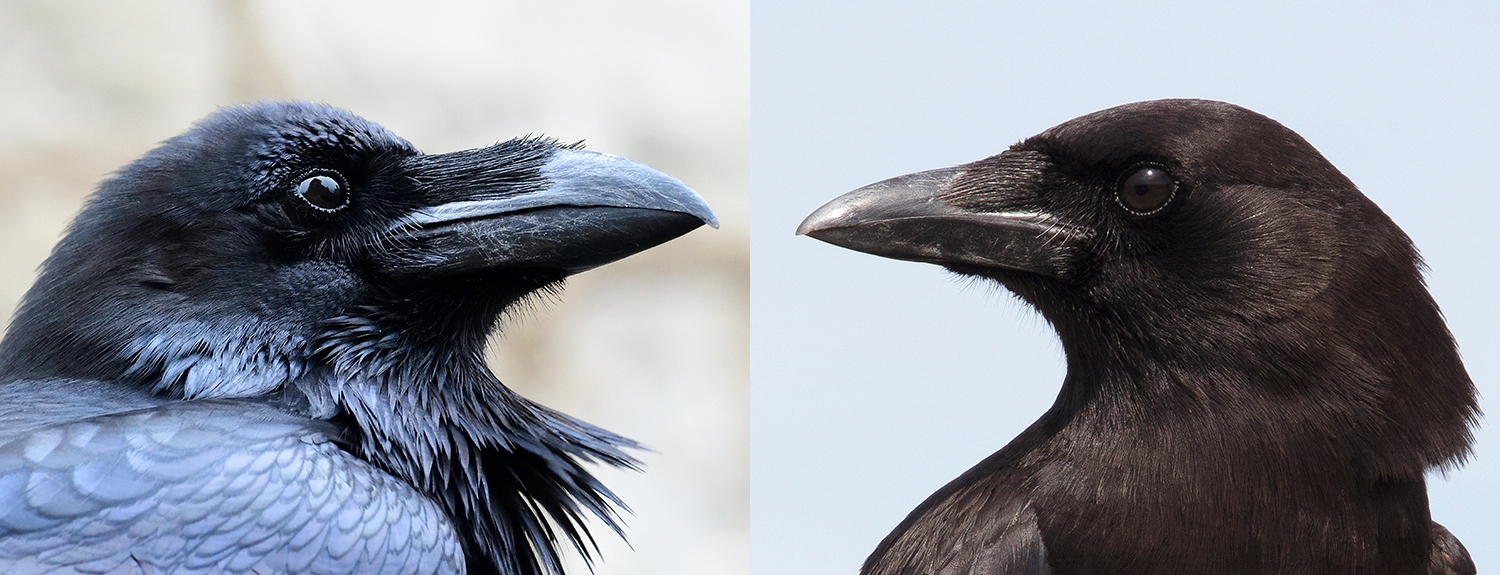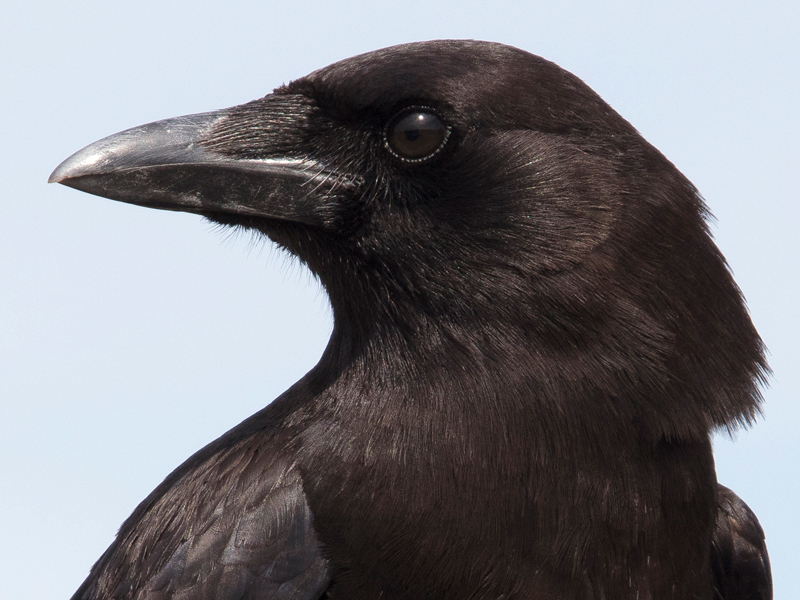
Happy International Crow and Raven Appreciation Day!
Learn to distinguish between American crows and common ravens
Published04/27/2020 , by Heather Cummins, gallery programs coordinator
Crows and ravens are members of the bird family Corvidae (also referred to as corvids) which contains ravens, crows, magpies, and jays. The genus Corvus contains 45 or more distinct species occurring across the globe.
In Minnesota, our representatives of the genus include American crows (Corvus brachyrhynchos) and common/northern ravens (Corvus corax). While they are rather distinct when placed side by side, they are easily confused for one another in the wild without the reference of the other for comparison. That said, there are few things you can look for the help determine which species you are looking at.
Ravens are typically twice the size of crows (they’re two to three times heavier!) and have much more robust bills. Ravens also sport a shaggy and glossy throat “beard” of thin pointed feathers, and their tails are diamond-shaped in flight with their wings and overall aerial behavior appearing raptor-like. Crows have a fan-shaped tail and rounder wing shape in flight, they are also iridescent with a purplish sheen in certain light. Another good distinguisher between the two are their calls: crows have the tell-tale “caw! … caw-caw!” call while ravens are a much lower, croak-ier “rok! … rok-rok-rok!”
Ravens are icons of northern Minnesota and the North Shore while crows are found throughout the state, thus allowing for range overlap between the two species. Historically, ravens suffered greatly due to human expansion and were often intentionally targeted and shot, causing a severe drop in their numbers. In the last few decades, their numbers have been recovering and we are now seeing their range expand even as far south as Jordan, Minnesota, with a number of sightings in the greater Twin Cities area already this spring, according to eBird sightings data.
Crows and ravens are generally not fans of each other, and as we see their ranges begin to overlap more, it’s likely that nature-observers will see more crow-raven interactions. Crows commonly exhibit mobbing behavior in which they team up to push out a threat, raven or otherwise. As long as the crows don’t get too close, ravens seem to merely be annoyed by crow mobs, but if they are mobbed in flight, ravens have been observed barrel-rolling to escape the attack!
Both ravens and crows are known to be exceptionally smart, capable of using tools and solving puzzles. Studies have even shown that ravens are capable of using past experience to plan to the future—this is a level of cognition previously only observed in humans and apes!
Common name: American crow

Scientific name: Corvus brachyrhynchos
Quick ID: Large, stocky bird, 17–21 inches, wingspan 33–39 inches. All black, iridescent, with stout bill and fanned tail in flight.
Phenology notes: Permanent resident, may edge slightly south in winter. Nesting begins in spring. Clutch size four to six eggs. Incubation by female, typically 18 days. Young fledge 28–35 days after hatching. Offspring from previous years may help care for new clutch. One brood annually. Eggs are bluish to olive green with dark-brown markings
Fun facts: Crows are very intelligent, known to collect bright, shiny items, solve puzzles, mimic human voices, and are highly social, capable of entertaining themselves. On average, live 10–15 years in the wild, and longer in captivity.
Common name: Common/northern raven

Scientific name: Corvus corax
Quick ID: Large, stocky bird, 21–27 inches, wingspan 45–51 inches. All black, with long, robust bill, throat appears to have a shaggy yet glossy feathered “beard” at rest, and tail diamond-shaped in flight. Overall, much larger than crows
Phenology notes: Permanent resident, may edge slightly south in winter, but little is known about where they go. Nesting begins in spring. Clutch size four to seven eggs. Incubation by female, 18–21 days. Young fledge 38–44 days after hatching. Eggs are bluish- to dull-green and spotted with brown.
Fun facts: Ravens are incredibly acrobatic in flight. For example, during courtship displays, males will soar, swoop, and tumble mid-air! Pairs are also known to soar together and will often preen each other’s feathers and touch bills. On average, live 10–15 years in the wild, longer in captivity.

